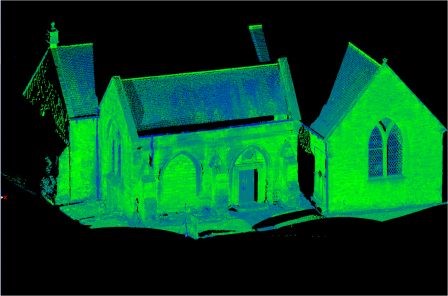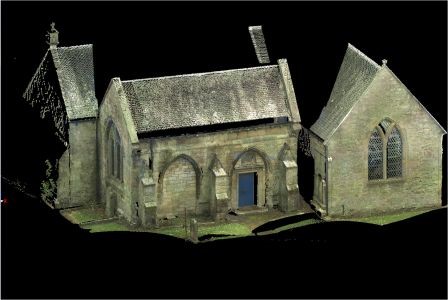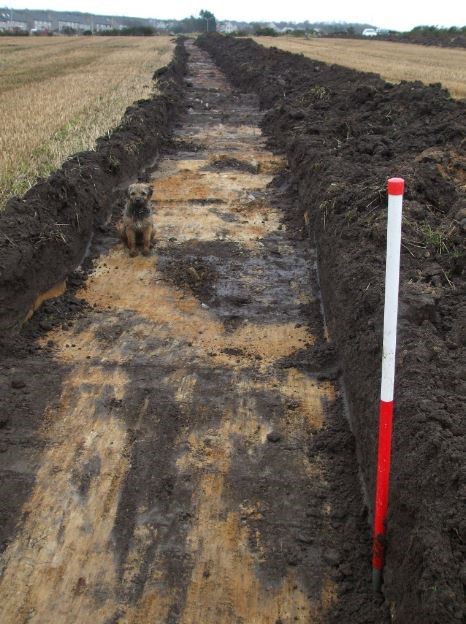My name is Hannah Smith and I work for Historic Environment Scotland, based in the digital archive team within the Heritage Directorate. For the first ever Digital Preservation Day I thought I would share some of the progress we have been making in terms of digital preservation at HES, as well as some of the more day to day work in the digital archive. We have been actively collecting digital archive since 2003, receiving both internally and externally generated material. Historic Environment Scotland currently holds more than 437,000 catalogued digital items which equates to around 32TB of archived data. Over the last 2 years, the digital archive has been making huge strides in renewing the technical infrastructure that underpins our work and to ensure the long term preservation of our digital records. Our goal is to provide the best possible care for our digital archives and we are looking to bench mark our services within the European accreditation framework. In 2015 HES invested in new trusted digital repository software, and work has focused on integrating this preservation system with our own repository. We have made huge advances in the standard of care we provide to our digital archive: 617,338 individual digital files have been audited and processed to ensure they conform to appropriate standards.
The priorities for HES digital archiving are to collect all primary material relating to archaeological and architectural work undertaken within Scotland and Scottish territorial waters. This remit covers an extremely diverse range of information types: reports; databases; geophysical survey; air photography; mapping (GIS) and topographic survey; buildings survey; visualisation reconstruction and digital video and audio. The complexity of some data types can pose challenges in terms of preservation such as 3D laser scans, a technology that is being increasingly utilised for recording the built environment.

3D Laser Scan of Pencaitland Church © HES

Digital photograph over 3D laser scan © HES
As technology evolves and file formats become obsolete, we have to choose the best way to maintain access to the collections we hold. The only practical way to do this is to ‘migrate’ the file into a new format, however, with some file types we risk losing or altering some of its properties. We therefore need to understand and define the significant properties of a file so that we can know what constitutes acceptable loss and what crosses the line into unacceptable loss.
To help explain what we do*, I've included this animation to digital preservation, that HES digital archive manager, Emily Nimmo, helped to create: https://youtu.be/pbBa6Oam7-w
*We don't wear capes, but still like to think of ourselves as Team Digital Preservation
Most of my day to day work involves processing externally generated material into our trusted digital repository and encompasses two areas: digital accessioning and digital cataloguing. We receive all types of digital media and often still receive obsolete media.

5¼-inch floppy disk and Amstrad 3 inch disk © HES
It's a very satisfying job to take the digital media and link the information to our relevant records and know the data is now safeguarded in our archive. It also allows me to see all types of interesting archaeology from across Scotland on a daily basis!

Submerged wartime defences off Roan Head, Flotta © Orkney Research Centre for Archaeology

Archaeological evaluation © Cameron Archaeology
The amount of digital material deposited with and curated by Historic Environment Scotland has increased significantly in the last two decades as a result of the wholesale move from the creation of traditional paper or photographic based records to born-digital material. There has also been an increased focus on opening up archives and collections by delivering services to the public online. Digital data is far more vulnerable to irrecoverable damage than physical drawings or photographs and digital media must be transferred into a preservation system within a relatively short period of time. The digital archive has received files, less than 10 years old that cannot be accessed. As a result, information and important archive about the historic environment is lost. The rapid pace of technological change means that hardware, software and storage media can become obsolete and inaccessible within a short period. This poses a significant threat to the survival of this resource for future generations. HES now aspires to achieve Trustworthy Digital Repository status, an internationally recognised standard for the curation of digital data, and we continue to make good progress towards this by demonstrating good repository standards.
Contact: This email address is being protected from spambots. You need JavaScript enabled to view it.

Read more...